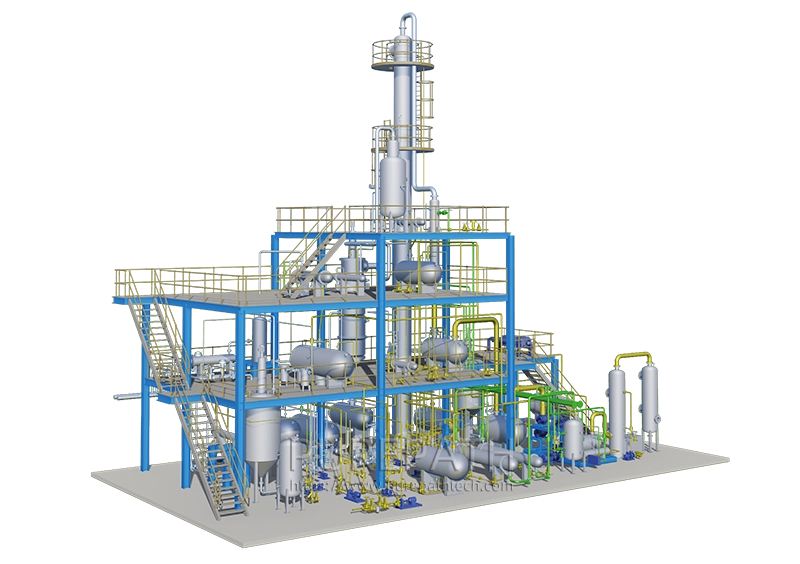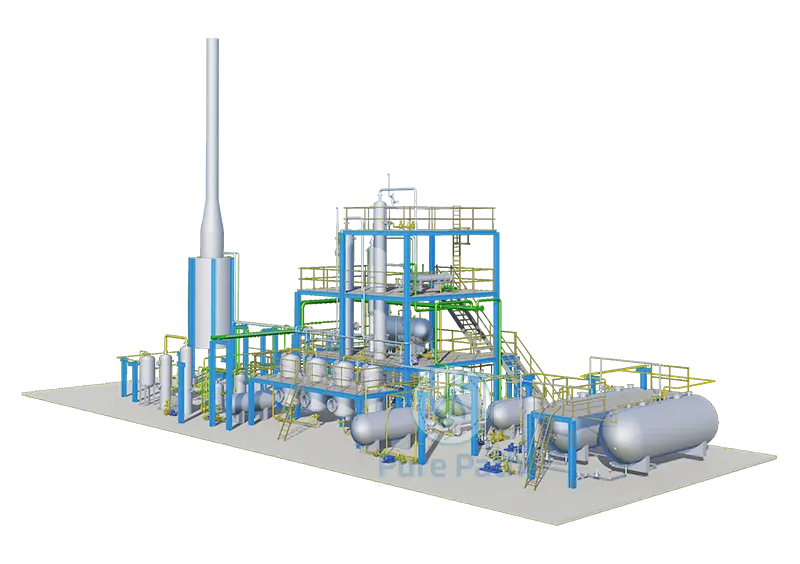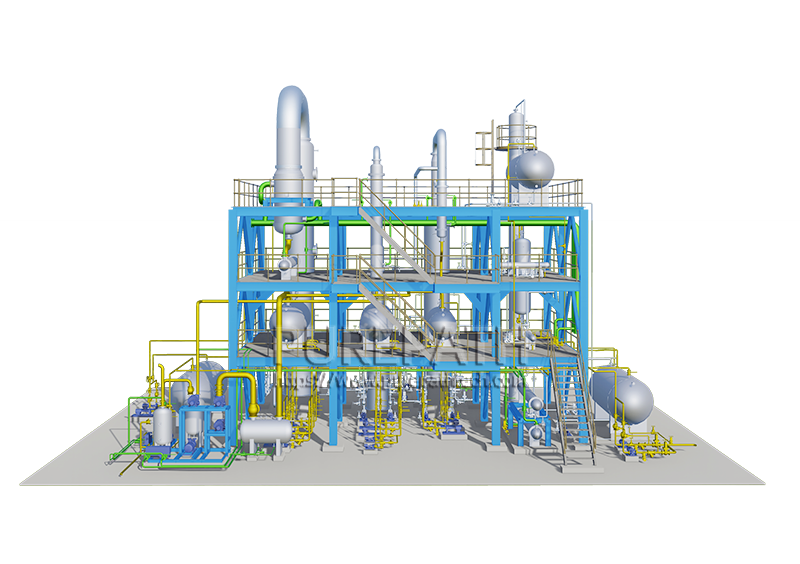Maintaining Your Waste Oil Recycling Plant for Optimal Performance
Used oil is a hazardous material that can pollute our soil and water if not disposed of properly. Waste oil recycling plants play a vital role in protecting our environment by transforming this waste into a valuable resource. However, like any complex machinery, these plants require regular maintenance to function efficiently and safely. Proper upkeep not only benefits the environment but also your bottom line.
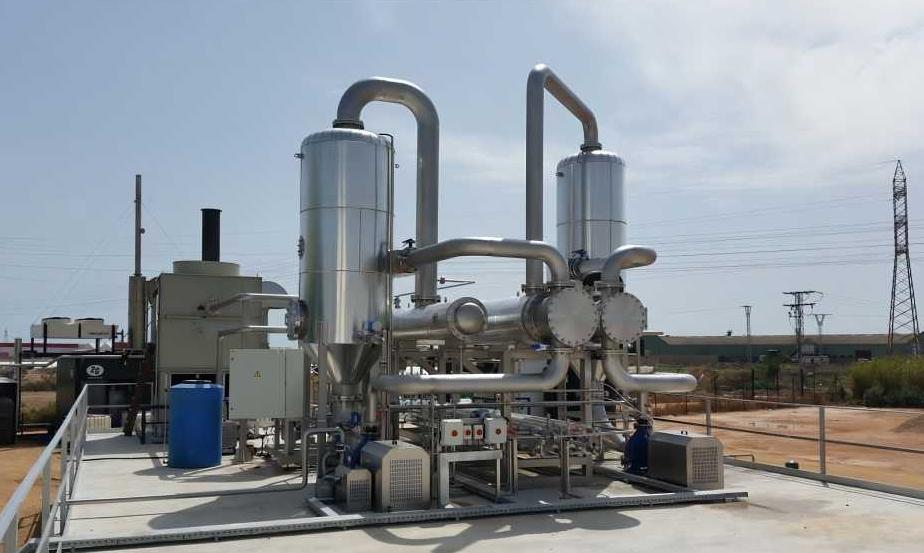
Benefits of Maintaining Your Waste Oil Recycling Plant
Maintaining your waste oil recycling plant isn’t just a matter of ticking off tasks on a checklist—it’s a strategic investment with multifaceted benefits that ripple throughout your operations and beyond.
- Enhanced Efficiency and Yield: A well-maintained plant operates like a finely tuned engine, extracting the maximum value from every drop of used oil. By ensuring that all components function optimally, from filtration systems to distillation units, you can boost the efficiency of the recycling process. This means higher yields of valuable products like diesel fuel, lubricants, and base oils, translating directly into increased revenue for your business.
- Cost Savings Across the Board: The old adage “prevention is better than cure” rings particularly true in the context of waste oil recycling plants. Regular maintenance not only prevents costly breakdowns and repairs but also helps you nip potential problems in the bud before they escalate into major headaches. By addressing issues proactively, you can avoid unplanned downtime, minimize production losses, and reduce the need for emergency repairs—which often come with inflated costs and logistical headaches. Moreover, maintaining peak efficiency in your operations leads to lower energy consumption and reduced waste generation, further trimming operating expenses in the long run.
- Compliance and Reputation Management: In an era of increasingly stringent environmental regulations and heightened public scrutiny, maintaining compliance with industry standards isn’t just a legal obligation—it’s a cornerstone of responsible business practices. Regular maintenance plays a crucial role in ensuring that your waste oil recycling plant meets or exceeds regulatory requirements for environmental protection, workplace safety, and product quality. By demonstrating your commitment to sustainability and adherence to best practices, you not only avoid fines and penalties but also safeguard your company’s reputation as a responsible corporate citizen.
- Extended Equipment Lifespan and Asset Optimization: Machinery and equipment are among the most significant capital investments in any industrial operation, and maximizing their lifespan is paramount to protecting your bottom line. Regular maintenance helps prevent premature wear and tear, corrosion, and other forms of degradation that can shorten equipment lifespan and necessitate costly replacements. By keeping your plant’s assets in prime condition, you not only minimize capital expenditures on new equipment but also maximize the return on investment over the long term—a win-win scenario for your business.
- Environmental Stewardship and Sustainability: At its core, waste oil recycling is about more than just economics—it’s about environmental stewardship and sustainability. By diverting used oil from landfills, waterways, and incinerators, recycling plants play a crucial role in conserving natural resources, reducing pollution, and mitigating the environmental impact of industrial activities. By maintaining your plant for optimal performance, you’re not just maximizing profits—you’re also fulfilling a broader commitment to protecting the planet for future generations.
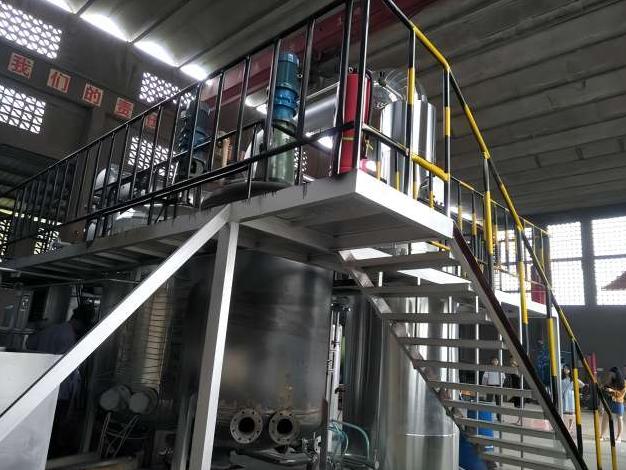
Key Components and Maintenance Checks
The smooth operation of your waste oil recycling plant hinges on the proper care of its key components. Here’s a closer look at some crucial areas and their recommended maintenance practices:
1. Pre-treatment Equipment
- Storage Tanks: Schedule regular cleaning to remove sediment build-up at the tank’s bottom. This prevents clogging in transfer lines and protects pumps. Inspect the tank walls for signs of corrosion or leaks. Early detection allows for timely repairs and prevents environmental hazards.
- Settling Tanks: These tanks rely on gravity to separate heavier solids from the oil. Ensure proper sludge removal from the bottom of the tank to maintain efficient settling. Clogged settling tanks can allow solids into downstream equipment, causing wear and tear.
- Coalescers: These use various methods, like media filtration or centrifugation, to remove water droplets from the oil. Regular maintenance involves cleaning or replacing the coalescing media based on the manufacturer’s recommendations. Water contamination in the distillation unit can lead to corrosion and hinder oil separation.
- Filtration Systems: These systems remove finer contaminants that escape settling tanks. Regular filter replacements are essential to prevent them from becoming overloaded and compromising the quality of the treated oil. Contaminated oil can have a lower market value and potentially harm equipment in later stages of the recycling process.
2. Distillation Unit
This is the heart of the recycling process, separating oil from contaminants through a heating and vaporization process.
- Heaters: Maintain a regular inspection schedule for the heaters, focusing on burner functionality, temperature controls, and safety features. Proper temperature control is crucial for efficient oil separation. Malfunctioning heaters can lead to incomplete distillation or overheating, damaging the oil and potentially causing safety hazards.
3. Additional Considerations:
- Piping and Valves: Regularly inspect piping for leaks and loose connections. Tighten loose connections promptly and address any leaks to prevent oil spills. Valves should also be checked for proper operation to ensure efficient flow control.
- Safety Equipment: Emergency eyewash stations, fire extinguishers, and ventilation systems all play a vital role in plant safety. Ensure these are inspected and serviced according to recommended protocols.
By following these maintenance checks and adhering to the manufacturer’s instructions, you can keep your waste oil recycling plant operating at peak performance. Remember, a well-maintained plant not only saves you money in the long run but also ensures the safety of your workers and the environment.
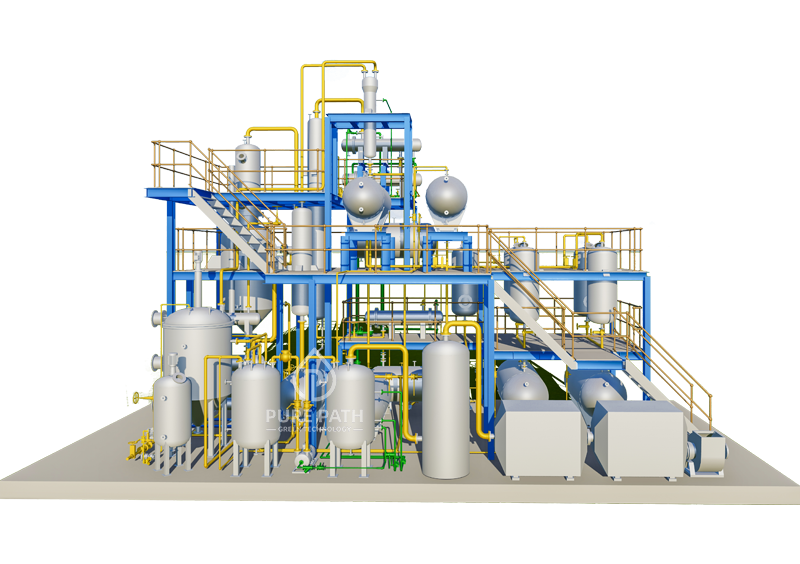
General Maintenance Practices
Daily Checks
Develop a routine for daily inspections that become second nature to your operators. This vigilance can catch minor issues before they escalate into major problems. Here’s a breakdown of key daily checks:
- Visual Inspection: Walk through the plant looking for leaks, loose connections, or any signs of damage. Pay close attention to hoses, valves, and flanges, which are common leak points. Look for unusual vibrations or noises that might indicate equipment malfunction.
- Lubrication Points: Many components within the plant rely on proper lubrication to function smoothly and minimize wear and tear. Consult the manufacturer’s manual for a lubrication schedule and ensure all designated points receive the recommended lubricant at the appropriate intervals.
- Filter Condition: Clogged or dirty filters can significantly impact performance. Visually inspect air and oil filters daily for signs of saturation or damage. Replace filters according to the manufacturer’s recommendations, or more frequently if operating conditions are particularly dusty or dirty.
- Fluid Levels: Check the levels of hydraulic fluids, coolants, and gear oils according to the manufacturer’s instructions. Maintaining proper fluid levels ensures optimal performance and protects equipment from overheating or damage.
- Record Keeping: Document your daily inspections in a dedicated logbook. This record keeping helps identify trends, track maintenance tasks, and demonstrates a commitment to responsible plant operation.
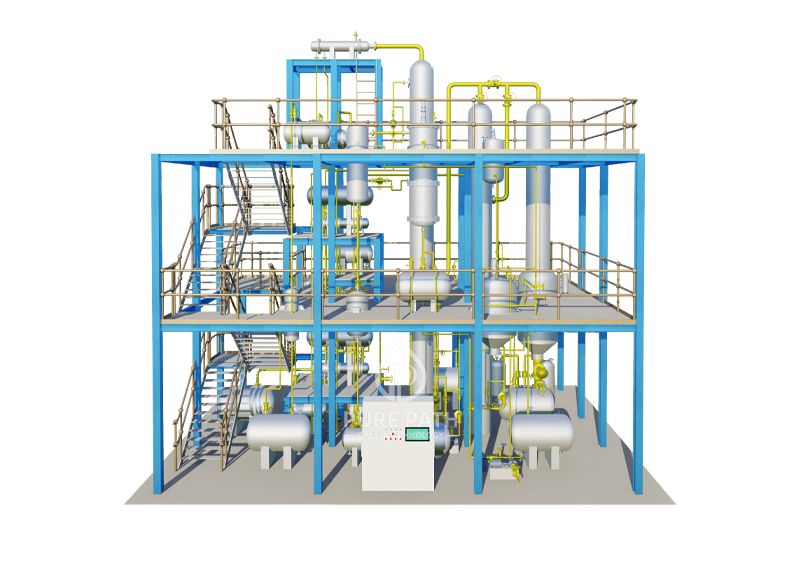
Spare Parts
Having a readily available stock of common spare parts like gaskets, seals, and filters allows your team to address minor issues quickly and minimize downtime. Consult your maintenance manuals and historical data to identify parts that are most frequently replaced. For less common parts, maintain a list of reliable suppliers with readily available contact information to avoid delays in obtaining replacements.
Following Operation Guidelines
The manufacturer’s operation manuals are a wealth of information specific to your waste oil recycling plant. These manuals outline proper operating procedures, safety protocols, and recommended maintenance schedules. Enforce adherence to these guidelines to ensure optimal performance, safety for your workers, and a longer lifespan for your equipment.
Remember, a well-maintained waste oil recycling plant is not only an environmentally responsible choice, but also a sound business decision. By implementing a comprehensive and consistent maintenance program, you can avoid costly repairs, minimize downtime, and maximize the efficiency and profitability of your operation.
Conclusion
By implementing a regular maintenance program, you can ensure your waste oil recycling plant operates efficiently and safely for years to come. This translates to significant cost savings, environmental benefits, and peace of mind. Remember to consult your plant’s specific manual for detailed maintenance procedures and don’t hesitate to seek professional help from qualified technicians for complex tasks.


